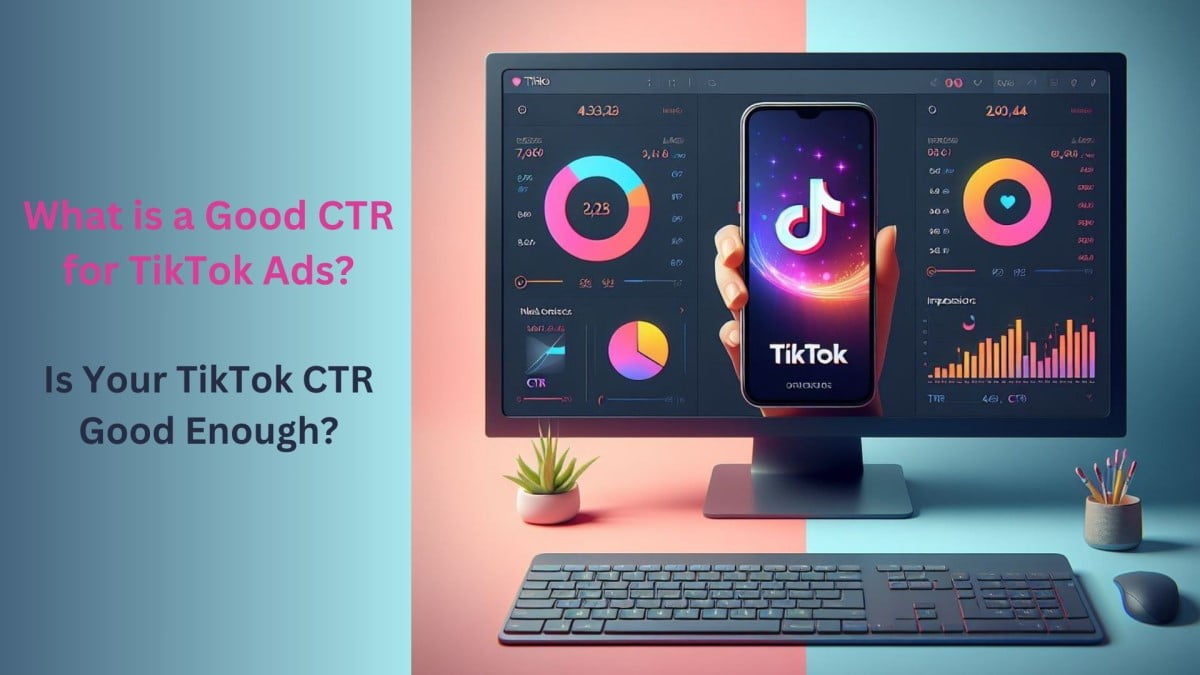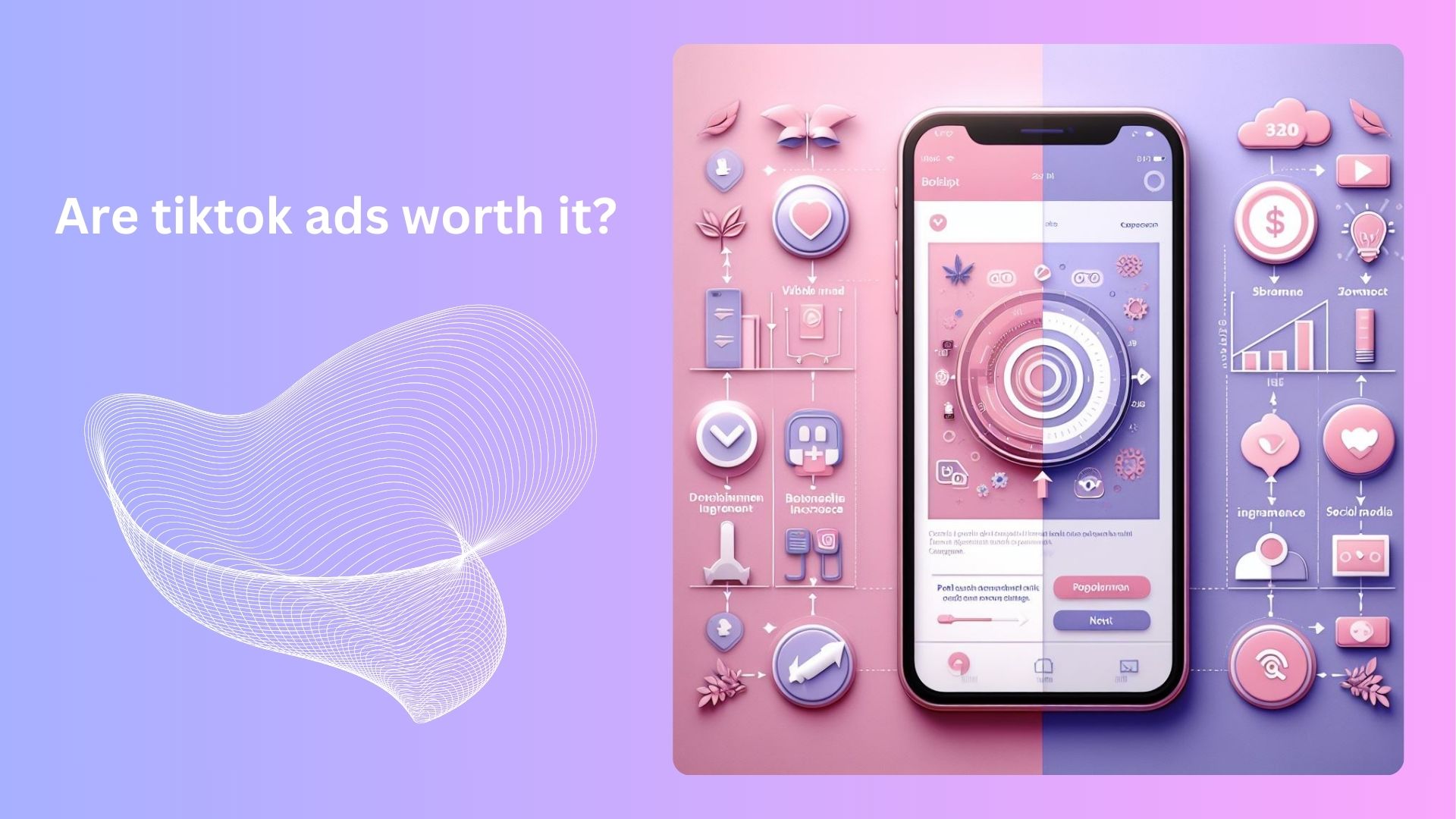Introduction
Imagine this: a customer with a burning question about the exact product or service you offer pulls out their phone and types it into Google. 81% of American shoppers do this very thing before making a purchase. Suddenly, their screen fills with search results, but only a select few businesses rise to the top. Wouldn’t you want your company to be one of them?
Google is the ultimate digital marketplace, teeming with potential customers actively searching for what you offer. This blog post will equip you with the knowledge and strategies to conquer both sides of the Google coin: Organic Search (SEO) and Paid Advertising (Google Ads).
What You’ll Learn:
- SEO Secrets Revealed: We’ll crack the code of Google’s ranking algorithm, showing you how to optimize your website and content to climb the search result ladder organically.
- Google Ads Mastery: We’ll unveil the power of Google Ads, guiding you through the process of crafting targeted campaigns that attract qualified leads and skyrocket your sales.
- The Winning Formula: Discover how to combine organic and paid strategies for maximum impact, ensuring your business dominates Google’s search landscape.
Why Promote on Google?
- Leaving the Competition in the Dust: Google is the search engine of choice for billions of users worldwide. Ranking high in search results puts your business front and center, leaving competitors struggling to be seen.
- Laser-Targeted Traffic = More Sales: Whether you’re a local plumber or an international tech company, Google allows you to target your ideal customers with pinpoint accuracy. By optimizing your website and ads for relevant keywords, you attract qualified leads genuinely interested in your offerings, ultimately leading to more sales and conversions.
- Building Trust and Credibility: Ranking organically on Google establishes your business as a trusted source. When potential customers see your website appear naturally in search results, it fosters trust and positions you as a leader in your industry.
Imagine your website buzzing with qualified leads, your phone ringing with inquiries, and your brand becoming synonymous with quality in your niche. Google promotion holds the key to unlocking this digital dream.
Choosing the Right Promotion Strategy: Organic vs Paid
There’s no one-size-fits-all answer when it comes to Google promotion. Here’s a breakdown of the two main methods to help you choose the right approach for your business:
- Organic Search (SEO): This strategy focuses on optimizing your website and content to rank higher in organic search results, attracting free traffic over time. It’s a cost-effective option, perfect for businesses with a long-term vision and the resources to invest in content creation and website optimization.
- Paid Advertising (Google Ads): With Google Ads, you create targeted campaigns that display your ads at the top of search results or on relevant websites. You only pay when someone clicks on your ad, making it a great option for businesses seeking immediate results and increased website traffic.
Ultimately, the best approach often involves a combination of both organic and paid strategies. Consider your budget, time commitment, and desired results when deciding which path to take, or even better, explore both!
Organic Promotion (SEO)
A. Understanding Google Search Engine Optimization (SEO)
Lost in the digital wilderness? Want customers to find your business online without spending a dime? The answer lies in SEO, or Search Engine Optimization. Think of it as the magic key that unlocks the top spots in Google search results. In simpler terms, SEO is all about optimizing your website to attract free traffic from people actively searching for what you offer. But how does Google decide who reigns supreme? Stay tuned to unravel the secrets of Google’s ranking algorithm!
B. Optimizing Your Website for Google Search
Imagine your website as a storefront on a bustling Main Street. To attract customers, you need to ensure it’s well-stocked, visually appealing, and easy to navigate. SEO is like giving your website a complete makeover for the digital world. Here’s how to optimize your website for Google’s favor, attracting organic traffic without breaking the bank.
1. On-Page SEO: Speak Google’s Language
On-page SEO focuses on optimizing the elements within your website to improve search engine visibility. Think of it as strategically placing information to help Google understand what your website is all about. Here are some key tactics:
a. Keyword Research: Unlocking Search Intent
Before crafting content, you need to understand what your target audience is searching for. Keyword research is the foundation of on-page SEO. It helps you identify relevant keywords with high search volume, meaning a lot of people are searching for those terms. But wait, there’s more! The ideal keyword isn’t just popular, it should also have low competition so you have a fighting chance of ranking high.
There are numerous free and paid keyword research tools available. Free options like Google Keyword Planner offer valuable insights, while paid tools like SEMrush or Ahrefs provide more in-depth analysis.
b. Keyword Optimization: Placement is Key
Once you have your target keywords, it’s time to strategically integrate them throughout your website content. Don’t just stuff them in unnaturally – Google (and your readers) will see right through that. Instead, focus on incorporating keywords seamlessly into your titles, meta descriptions (the little blurbs that appear under search results), headings throughout your content, and naturally woven within the body text. The goal is to make your content highly relevant to the keywords people are searching for, while maintaining a smooth reading flow.
c. Content is King (and Queen):
High-quality content is the crown jewel of your SEO strategy. Google prioritizes informative, engaging content that solves user problems and keeps them glued to your website. Forget generic marketing fluff – create valuable content that educates, entertains, and positions you as an authority in your niche.
Explore different content formats to cater to diverse learning styles. Blog posts brimming with valuable insights, eye-catching infographics for visual learners, or engaging videos can all be powerful tools in your content arsenal.
d. Website Structure & Navigation: A User-Friendly Journey
A well-organized website is not just good for SEO, it’s crucial for user experience. Imagine a cluttered store with products haphazardly thrown everywhere. Users (and search engines) will get frustrated and leave.
Strive for a clear and logical website structure, with a hierarchy of pages and easy-to-navigate menus. Internal linking – strategically placing links to relevant pages within your website – helps search engines understand the structure and context of your content, further boosting your SEO efforts.
2. Off-Page SEO
On-page SEO optimizes your website for search engines, but off-page SEO extends your reach, building your website’s authority in Google’s eyes. Think of it like building a strong reputation in the online community. Here’s how to establish your website as a trustworthy source:
a. Backlinks: The Currency of Trust
Imagine a website as a scholar, and backlinks as citations in a research paper. The more high-quality websites linking back to yours, the more credible and valuable Google perceives your website to be. Earning backlinks takes effort, but the rewards are substantial.
Here are some strategies to get you started:
- Guest Blogging: Contribute informative articles to relevant websites in your niche. Include a link back to your website within the article (but avoid spammy tactics).
- Directory Listings: Submit your website to high-quality online directories related to your industry.
- Online PR: Generate positive press coverage through press releases or online news mentions, often containing backlinks to your website.
b. Brand Mentions & Online Buzz:
Google considers more than just backlinks. Positive online mentions, reviews, and social media engagement all contribute to your website’s authority.
- Encourage Customer Reviews: Positive reviews on platforms like Google My Business or industry-specific review sites build trust and improve local SEO.
- Social Media Engagement: Actively engage with your audience on social media platforms. The more people talk about your brand online, the better.
Paid Promotion with Google Ads
A. Introduction to Google Ads
Organic SEO is fantastic for long-term growth, but what if you need a traffic surge right now? Enter Google Ads, the powerhouse platform for targeted online advertising. It works on a pay-per-click (PPC) model, meaning you only pay when someone clicks on your ad. This makes it a cost-effective way to reach a highly relevant audience actively searching for what you offer.
Google Ads offers a variety of campaign types to suit your specific needs:
- Search Network Ads: These appear at the top of search results when users enter relevant keywords. Imagine your ad popping up when someone searches for “best running shoes for men” – prime real estate to capture potential customers.
- Display Network Ads: These visual ads appear on millions of websites across the internet, reaching a broader audience based on demographics and interests. Think of them as eye-catching billboards in the vast digital landscape.
- Shopping Ads: Perfect for e-commerce businesses, these showcase product images, prices, and store names directly in search results, enticing users to click through and make a purchase.
B. Setting Up Your Google Ads Campaign
Ready to harness the power of Google Ads and watch your website traffic skyrocket? The good news is, setting up a campaign is easier than you might think! Here’s a step-by-step breakdown to get you started:
1. Create Your Google Ads Account:
Head over to https://ads.google.com/home/ and click “Start Now.” Follow the prompts to create your free Google Ads account.
2. Define Your Campaign Goals:
What do you want to achieve with your ads? Do you want to drive more website traffic, generate leads, or boost online sales? Clearly defining your goals from the outset helps tailor your campaign for maximum impact.
3. Set Your Budget:
Google Ads offers great flexibility when it comes to budget. You set a daily or total campaign budget, ensuring you stay in control of your spending.
4. Targeting Options: Reach the Right Audience
The beauty of Google Ads lies in its laser-focused targeting capabilities. You can define your ideal audience based on demographics (age, location, income), interests, and online behavior. Imagine showing your ads only to people actively searching for your products or services – a recipe for successful advertising.
C. Keyword Research & Targeting
Just like a delicious meal starts with fresh ingredients, a successful Google Ads campaign hinges on the right keywords. These are the search terms users type into Google, and your goal is to ensure your ads appear when those searches are relevant to your business.
Keyword Research: Finding the Advertising Goldmine
Keyword research is crucial for maximizing your return on investment (ROI). Here’s why:
- Relevance is King: Target keywords that perfectly align with your offerings and user search intent. Imagine showing ads for “running shoes for men” to someone searching for “best hiking boots.” Not a great match, right?
- Competition Matters: While high-volume keywords might seem ideal, they can also be highly competitive, driving up your advertising costs. Consider a mix of popular and long-tail keywords (more specific phrases) to find the sweet spot between reach and affordability.
Google Keyword Planner: Your Research Partner
Don’t worry, you don’t have to navigate the keyword jungle alone. Google Keyword Planner, a free tool within your Google Ads account, is here to help. Use it to discover relevant keywords, estimate search volume, and see how competitive each term is.
Beyond Keywords: Targeting Like a Pro
Keywords are just one piece of the targeting puzzle. Google Ads allows you to go deeper, reaching your ideal audience based on:
- Demographics: Target users based on age, location, income, and even household details (perfect for reaching parents with young children, for example).
- Interests: Reach people passionate about your niche. Are you selling mountain bikes? Target users interested in cycling or outdoor adventures.
- Locations: Narrow your focus to specific cities, states, or even zip codes, ensuring your ads reach potential customers within your desired geographic area.
D. Writing Effective Ad Copy
Your ad copy is your digital storefront window – it needs to be clear, captivating, and entice users to click. Here are some secrets to writing Google Ads that compel action:
- Headlines that Hook: The headline is your first impression, so make it count. Use strong verbs, highlight unique selling points, and keep it concise (around 30 characters).
- Benefits Over Features: People care more about what your product or service does for them than its technical specifications. Focus on the benefits – how your offering solves their problem or improves their life.
- Keywords Throughout: Strategically incorporate relevant keywords throughout your ad copy, but avoid keyword stuffing.
- Calls to Action (CTAs): Tell users exactly what you want them to do – “Visit our website,” “Shop Now,” “Get a Free Quote.” Clear CTAs remove any confusion and encourage clicks.
- Keep it Mobile-Friendly: Over half of all Google searches happen on mobile devices. Ensure your ad copy is concise and readable on smaller screens.
E. Landing Pages & Conversion Tracking
So, you’ve crafted compelling ads that entice users to click. Now what? Here’s where landing pages come in.
Landing Pages: Your Conversion Champions
Imagine a user clicks your ad, eager to learn more. Their destination is your landing page – a dedicated webpage designed to convert that click into a sale, lead, or desired action. An effective landing page is like a well-trained salesperson – it clearly communicates your value proposition, eliminates distractions, and guides users towards the conversion goal.
Crafting Landing Pages that Convert:
- Match Ad Copy & Landing Page: Ensure your landing page aligns with the promises made in your ad. A confused user is a bouncing user, so maintain message consistency.
- Focus on Benefits: Reiterate how your product or service solves the user’s problem. Use clear visuals, testimonials, and strong calls to action (CTAs) to encourage conversions.
- Mobile-Friendly Design: Remember the mobile majority! Make sure your landing page loads quickly and offers a seamless user experience on all devices.
Measuring Success with Conversion Tracking
Not all clicks are created equal. Conversion tracking in Google Ads helps you measure how effective your campaigns are at achieving your goals. Track actions like website visits, form submissions, or online purchases to see which ads and landing pages are driving the most conversions, allowing you to optimize your campaigns for maximum return on investment (ROI).
F. Monitoring & Optimizing Your Campaigns
Launching your Google Ads campaign is just the beginning. The key to long-term success lies in ongoing monitoring and optimization. Here’s how to ensure your campaigns keep delivering stellar results:
The Art of Optimization:
- Bid Adjustments: Google Ads allows you to adjust your bids (the maximum amount you’re willing to pay for a click) based on factors like device, location, and time of day. Analyze your campaign data to identify areas where a bid tweak can improve performance.
- A/B Testing Ad Copy: Unsure which ad copy resonates best with your audience? Run A/B tests to compare different headlines, descriptions, and CTAs. The data will reveal the winning combination that drives more clicks and conversions.
- Landing Page Optimization: Your landing page is the final frontier. Use conversion tracking data to identify which landing pages are converting well, and focus on improving the ones lagging behind. Test different layouts, CTAs, and design elements to maximize conversions.
Conversion Tracking: Your Data-Driven Ally
Google Ads conversion tracking isn’t just about measuring success; it’s a treasure trove of user behavior insights. Analyze which keywords, ads, and landing pages are generating the most conversions. This data empowers you to identify what’s working and what needs improvement, allowing you to continuously refine your campaigns for optimal performance. Remember, the more you optimize, the more you squeeze out of your Google Ads budget, reaching your target audience and achieving your business goals.
Additional Tips for Google Promotion
While SEO and Google Ads are powerhouses, there’s more to Google promotion than meets the eye. Here are some additional tips to dominate search results and establish your online presence:
A. Google My Business
In today’s digital age, local SEO is crucial for brick-and-mortar businesses. Claiming and optimizing your Google My Business (GMB) profile is a free and effective way to increase local visibility. A well-optimized GMB profile appears prominently in Google Maps and local search results, helping potential customers find your business easily.
Unlock the Power of GMB Features:
- Reviews: Encourage satisfied customers to leave positive reviews on your GMB profile. Positive reviews build trust and credibility, influencing customer decisions.
- Photos: Showcase your business with high-quality photos – your storefront, team, and happy customers. Visuals are captivating and can significantly boost engagement.
- Q&A: The GMB Q&A feature allows users to ask questions about your business. Responding promptly and professionally positions you as a helpful and transparent business.
B. Google Analytics
Ever wondered where your website traffic comes from, or what visitors do once they arrive? Google Analytics, a free website traffic analysis tool, unlocks these mysteries. By implementing Google Analytics, you gain valuable insights into user behavior, such as:
- Traffic Sources: See how users discover your website – organic search, social media, or paid advertising. This data helps you understand which marketing channels are most effective.
- Content Performance: Track which website content resonates best with your audience. Identify high-performing pages and optimize less engaging ones for better results.
- User Journey: Analyze how users navigate your website. Understanding user flow helps you optimize your website for a smoother and more engaging user experience.
By leveraging Google Analytics data, you can tailor your SEO and Google Ads strategies for maximum impact, attracting the right audience and achieving your online goals.
C. Stay Ahead of the Curve: Google Updates
The world of SEO is dynamic, with Google’s algorithm evolving frequently. Keeping yourself informed about these updates is vital. Minor tweaks might not significantly impact your website ranking, but major algorithm shifts can necessitate strategic adjustments to your SEO and Google Ads approach. Regularly checking reliable SEO resources and Google’s official webmaster guidelines ensures you stay ahead of the curve and maintain optimal online visibility.
Conclusion
Conquering the vast digital landscape can feel overwhelming, but with the right tools and strategies, you can propel your business to new heights on Google. This guide has equipped you with a powerful SEO and Google Ads toolkit, empowering you to attract organic traffic and target high-intent audiences with laser precision. Remember, the magic lies in combining these approaches. Organic SEO builds long-term authority, while Google Ads provide an instant traffic boost.
So, don’t wait any longer! Dive into the SEO strategies outlined above, craft compelling Google Ads campaigns, and watch your website traffic and conversions soar. The top of Google search results awaits!
Frequently Asked Questions (FAQ)
SEO:
- How long does SEO take to work? SEO is a marathon, not a sprint. While you might see some initial improvements within a few months, significant results can take anywhere from 6 months to a year, depending on your competition and niche. Focus on creating high-quality content and building backlinks for long-term SEO success.
Google Ads:
- How much does Google Ads cost? The beauty of Google Ads is that you set your budget. You can spend as little or as much as you’d like per day or campaign. However, the cost per click (CPC) can vary depending on your industry, keywords targeted, and ad quality.
SEO vs Google Ads:
- Is SEO better than Google Ads? Neither! Both SEO and Google Ads are powerful tools that work best together. SEO lays the foundation for organic traffic, while Google Ads provide a targeted approach to reach high-intent users actively searching for what you offer. This combination maximizes your reach and drives results.
 10 Best Law Firm Ads: A Dive into Creative Legal Marketing
10 Best Law Firm Ads: A Dive into Creative Legal Marketing What is a Good CTR for TikTok Ads? Is Your CTR Good?
What is a Good CTR for TikTok Ads? Is Your CTR Good? Are tiktok ads worth it?
Are tiktok ads worth it?